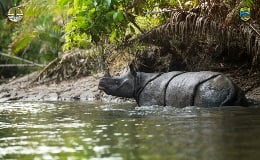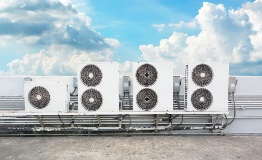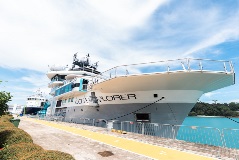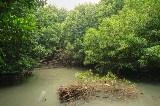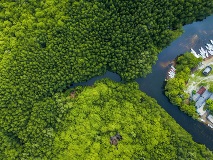Project Partner: Climateworks Centre
Geographies: Indonesia
What is the core idea of the pilot?
The Southeast Asia Framework for Ocean Action in Mitigation (SEAFOAM) aims to pioneer the inclusion of the ocean in Indonesia's climate mitigation plans, setting a benchmark for other countries to follow. The approach looks at creating a joint vision through ecosystem building and facilitating collaboration and coordination around providing knowledge of how the ocean can contribute to emissions reduction.
Phase 1, funded by Quantedge (PAA Member), assessed the decarbonisation potential of Indonesia’s marine and coastal resources, and demonstrated its capacity to become a regional leader in ocean-climate action through the right policy support and investments, ecosystem protections and energy efficiency measures.
In Phase 2, SEAFOAM aims to amplify this success by continuing to support the government in realising the ocean’s role as a climate solution.
Why is this innovative?
We combine systems-level thinking with approaches that bridge other works with the right decision makers:
- SEAFOAM is the first project in the region that directly brings ocean mitigation into the national climate strategy. The project’s success offers scalability to other countries in Southeast Asia and/or other island nations
- The project combines research and public engagement with the ‘inside track’ approach, bringing the information to the right people within the government and policy making process
- The project offers tailored capacity building for government and NGOs and training on the linkages between the ocean and the climate
What will success look like?
The Indonesian government has included blue carbon as a separate category of targets and mitigation strategies within its next Nationally Determined Contribution due in 2025.
By 2026:
- Investment is being directed into blue ecosystems through a new financial system architecture.
- Indonesia has integrated relevant policies across key government departments, creating systemic support to implement the ocean targets and strategies in the 2025 NDC.
- There is a cohort of stakeholders upskilled, engaged and enabled to lead the implementation of the policy changes.
How will success be achieved?
The three-year SEAFOAM implementation plan focuses on three main interventions:
1. Establish forums for dialogue & capacity building to address:
- Layer 1: Convening key decision-makers at the national (Ministry of Marine Affairs and Fisheries), provincial, local government, and community levels.
- Layer 2: Offering capacity building and training on the ocean-climate nexus.
2. Knowledge generation and pilot projects collation to address:
- Layer 3: Curating and creating knowledge assets and supporting pilot project development.
3. Creating a specific policy intervention project to address:
- Layer 4: Advising on specific policy interventions related to decarbonisation and systems change
Who is leading the project?
Climateworks Centre has 15 years of experience in Australia and five years in Indonesia working to create the enabling environment to shift to low-emissions solutions.
In Indonesia, it made demonstrable progress in raising ambition by providing recommendations to the Indonesian government:
- Co-led sessions for G20 Energy Transition Working Group leading to recommendations endorsed by Indonesia’s Vice-President
- Led development and implementation of ESG framework for Financial and Development Supervisory Board, BPKP
Climateworks’ deep knowledge of international ocean-climate dialogues and trends is tightly interwoven with its contextual understanding of how the Indonesian government works across its five levels of government. In Phase 1, it has demonstrated ‘why’ these inclusions are critical, and ‘what’ are the sectors that can contribute to Indonesia’s net zero goal. Findings have been presented to both the Indonesian government and an international audience to build the case for why ocean-climate action is urgent and demonstrate the ‘how’ by establishing what good looks like.

.jpg?sfvrsn=9ab1f1f6_1)



